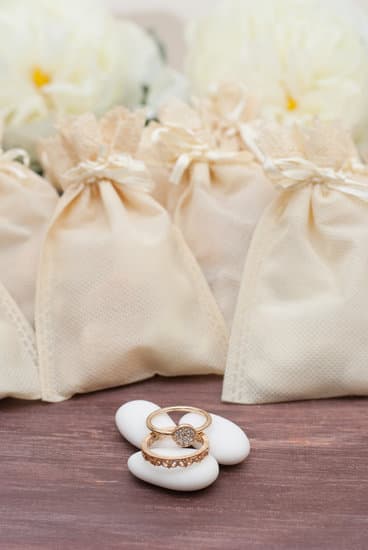Are wedding rings universal? This question has long intrigued people around the world, as the tradition of exchanging wedding rings spans across cultures and time periods. In this article, we will delve into the symbolism and tradition of wedding rings, exploring their history, cultural significance, and global presence.
The exchange of wedding rings is a universal symbol of love and commitment, with roots that trace back to ancient times. From traditional bands to modern trends, the evolution of wedding ring designs reflects changing customs and beliefs surrounding marriage. Throughout different religions and belief systems, the importance of wedding rings remains a constant thread that unites couples in matrimony.
In our exploration of the global presence of wedding rings, we will take a look at various customs and traditions from around the world, shedding light on the cultural significance of these symbols of love and commitment. By understanding the universal appeal and significance of wedding rings across different cultures, we can appreciate their uniting power as a symbol of everlasting love.
The History of Wedding Rings
Throughout history, the materials used to make wedding rings have varied depending on cultural practices and availability of resources. In ancient times, rings were often made from simple materials such as reeds, leather, or bone. As civilizations advanced, precious metals like gold and silver became the preferred choice for crafting wedding bands. Today, modern couples have a wide variety of options including platinum, titanium, and even alternative materials like wood or silicone.
In more recent times, the tradition of exchanging wedding rings has become a universal practice in many cultures around the world. While customs and designs may vary from one region to another, the symbolism remains consistent – a circular band representing eternal love and commitment.
The act of exchanging rings during a wedding ceremony is a powerful symbol in itself, signifying the unity and bond between two individuals. This universal significance makes it clear that wedding rings truly are universal in their representation of love and devotion.
| History | Wedding Rings |
|---|---|
| Ancient Egypt | Eternity Symbol |
| Roman Culture | Ownership & Commitment |
| Material Variations | Precious Metals & Alternatives |
Cultural Significance of Wedding Rings
Wedding rings are not only a symbol of love and commitment but they also hold cultural significance in different parts of the world. The customs and traditions surrounding the exchange of wedding rings vary greatly from one culture to another, showcasing the diversity and richness of marital practices globally.
Cultural Variations in Wedding Ring Exchange
In many Western cultures, the exchange of wedding rings is a common practice during the marriage ceremony. However, in some Eastern cultures, such as in India, the groom may place a toe ring on the bride’s second toe instead of exchanging traditional wedding bands. In other cultures, such as in Russia, three rings are often exchanged – an engagement ring, a wedding ring, and a ring to signify marriage.
Symbolism Behind Wedding Rings
Different cultures attribute various meanings and symbolism to wedding rings. For example, in Irish tradition, Claddagh rings are used to symbolize love (heart), friendship (hands), and loyalty (crown). In Filipino culture, coins known as “arrhae” are exchanged by the couple during the wedding ceremony as a symbol of prosperity and commitment to providing for each other.
Traditional Customs vs Modern Practices
While some cultures adhere strictly to traditional customs when it comes to wedding rings, others have embraced modern trends. For instance, couples in Japan commonly wear Western-style wedding bands now instead of traditional Japanese ceremonial jewelry. This blending of traditional customs with modern practices reflects the evolving nature of marital traditions across different cultures.
As we consider all these diverse customs and traditions from around the world concerning wedding rings, it becomes clear that while there may be differences in how they are exchanged and what they symbolize, their universal presence underscores their importance as a powerful symbol of love and commitment.
Are Wedding Rings Universal
The tradition of exchanging wedding rings dates back thousands of years and has been a symbol of love and commitment in various cultures. The universal appeal of wedding rings can be seen across different countries and traditions, showcasing the significance of this symbol in relationships around the world.
In many cultures, the exchange of wedding rings is a fundamental part of the marriage ceremony, representing the eternal bond between two individuals. From ancient civilizations to modern-day societies, the act of exchanging rings has remained a universal expression of love and commitment. This timeless tradition transcends geographical boundaries and cultural differences, illustrating its universal importance.
While wedding ring customs may vary from one culture to another, the underlying symbolism remains consistent – a circle representing eternity and never-ending love. For example, in Western traditions, wedding rings are typically worn on the fourth finger of the left hand, as it was believed that this finger had a vein that led directly to the heart. Similarly, in Indian culture, toe rings are also exchanged as a symbol of matrimony.
The global presence of wedding rings underscores their significance as a universal symbol of love and commitment. Whether it’s a simple band or an elaborate design, the exchange of wedding rings is a heartfelt gesture that resonates across different cultures and traditions.
| Country | Wedding Ring Custom |
|---|---|
| United States | Exchange during wedding ceremony |
| India | Toe ring exchange as well as finger ring exchange |
| Japan | Simple metal bands called ‘kizuna’ symbolizing unity |
Importance of Wedding Rings in Different Religions and Belief Systems
Wedding rings hold a significant place in various religions and belief systems around the world. Here are some examples of the importance of wedding rings in different cultures:
- Christianity: In Christian weddings, the exchange of wedding rings is a sacred and symbolic tradition. The circular shape of the ring represents eternity and the unending love between the couple. The act of exchanging rings also signifies the couple’s commitment to each other before God.
- Judaism: In Jewish tradition, wedding rings hold great significance. During the wedding ceremony, the groom places the ring on the bride’s finger while reciting a declaration of his intent to marry her. This act symbolizes his commitment and responsibility towards her.
- Hinduism: In Hindu weddings, the bride and groom exchange wedding rings as a symbol of their union and commitment to one another. The ring is often considered a promise of lifelong fidelity and love.
In addition to these examples, many other cultures and belief systems attach deep meaning to the exchange of wedding rings during marriage ceremonies. Regardless of religious or cultural differences, wedding rings serve as a universal symbol of love and commitment.
Evolution of Wedding Ring Designs
Wedding ring designs have evolved over time, reflecting changes in fashion, technology, and cultural influences. From traditional bands to modern trends, the evolution of wedding ring designs demonstrates how the symbol of love and commitment has adapted to the preferences and values of each era. Below are some key points highlighting the evolution of wedding ring designs:
- Traditional Bands: Historically, wedding rings were simple bands made from materials such as gold, silver, or platinum. These classic designs symbolized eternal love and unity, with their circular shape representing never-ending commitment.
- Gemstone Accents: In more recent years, there has been a trend towards incorporating gemstones into wedding ring designs. Whether it’s a small diamond accent or a colorful precious gem, these additions add an extra touch of elegance and individuality to the traditional band.
- Personalized Engravings: Another modern trend in wedding ring design is personalized engravings. Couples are choosing to inscribe meaningful dates, quotes, or symbols inside their rings as a way to personalize their bands and make them even more special.
As we can see, wedding ring designs have evolved to reflect changing tastes and cultural influences. While traditional bands remain popular for their timeless appeal, modern trends offer couples the opportunity to express their unique personalities and preferences through their choice of wedding rings.
Understanding this evolution is important in appreciating how wedding rings continue to hold universal significance as symbols of love and commitment across different cultures and traditions.
The Uniting Power of Wedding Rings
Wedding rings are not just pieces of jewelry; they are universal symbols of love, commitment, and unity. Across different cultures and traditions, the exchange of wedding rings signifies the binding together of two individuals in a lifelong partnership. This section will explore the unifying power of wedding rings and how they serve as a universal symbol of love and commitment.
Symbolism and Meaning
In many societies, the act of exchanging wedding rings represents the couple’s pledge to each other. The circular shape of the ring symbolizes eternal love with no beginning or end. The wearing of the ring on the fourth finger of the left hand is also significant as it is believed to be directly connected to the heart by a vein. This symbolism shows that despite cultural differences, the sentiment behind wedding rings remains consistent.
Global Presence
Wedding rings can be found in various forms across different cultures around the world. From simple gold bands to intricately designed pieces adorned with precious gemstones, the act of exchanging rings during marriage ceremonies is a common practice. This global presence demonstrates that while wedding ring customs may vary, their fundamental significance as a symbol of love and commitment remains constant.
Celebrating Unity
Ultimately, wedding rings serve as a universal representation of unity between two individuals. Regardless of cultural or religious backgrounds, the act of exchanging rings brings couples together in a shared expression of love and devotion. It highlights the universality of human emotions and aspirations for lifelong partnerships built on mutual respect and support. Therefore, wedding rings are indeed universal symbols that transcend geographical boundaries and cultural differences in celebrating love and commitment.
Conclusion
In conclusion, it is clear that wedding rings hold a universal appeal and significance across various cultures and traditions around the world. From ancient times to modern-day customs, the symbolism of love and commitment embodied by these bands transcends geographical and religious boundaries. Whether it’s a simple gold band or an intricately designed diamond ring, the sentiment behind the exchange of wedding rings remains consistent – a tangible symbol of enduring love and devotion.
As we have explored in this article, wedding rings have been an integral part of marriage ceremonies for centuries, with each culture adding its own unique customs and traditions to the symbolism attached to these pieces of jewelry. From ancient Egypt to modern-day America, the act of exchanging rings has remained a timeless tradition that signifies a couple’s commitment to one another.
The cultural significance of wedding rings varies from country to country, but their universal portrayal as a symbol of eternal love remains constant.
Despite differences in belief systems and cultural practices, wedding rings continue to hold immense value in different religions and regions. Whether it’s the exchange of simple bands or elaborate designs during marriage ceremonies, the sentiment behind these gestures remains constant – a declaration of love and commitment. Thus, it is evident that wedding rings are indeed universal in their representation of enduring love and lifelong devotion, making them a cherished tradition across various cultures worldwide.
Frequently Asked Questions
Is the Wedding Ring Finger Universal?
The tradition of wearing a wedding ring on the fourth finger of the left hand is not universal. In some cultures, the ring is worn on the right hand. However, in Western cultures, it’s customary to wear it on the left hand.
Do Any Cultures Not Use Wedding Rings?
Yes, there are cultures that do not use wedding rings as a symbol of marriage. For example, in some Eastern cultures like Hinduism and Buddhism, there may be other symbols or rituals to signify marriage instead of exchanging rings.
Do Different Cultures Wear Wedding Rings on Different Hands?
Different cultures have varying traditions regarding which hand to wear the wedding ring on. For example, in many Western countries, it’s common to wear the ring on the left hand while in Eastern European countries like Russia and Greece, it’s worn on the right hand.
Additionally, some Orthodox Christians wear the engagement ring on their right hands and move it to their left after getting married.

I have been involved in marriages for over 20 years helping couples and singles understand more about them.





